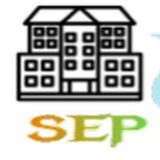Punctuation marks are like the traffic signals of written language. They guide us through the twists and turns of sentences, ensuring that our words are clear, coherent, and convey the intended meaning. In this blog, we will explore the world of punctuation marks, their various types, and how they play a crucial role in making our writing precise and powerful.
पंक्चुएशन मार्क्स लिखित भाषा के संकेत द्वारा जानकारी देने वाले होते हैं, जैसे यातायात संकेत। वे हमें वाक्यों की घुमावदार और मोड़-मोड़ पर ले जाते हैं, सुनिश्चित करते हैं कि हमारे शब्द स्पष्ट, सुसंगत और इच्छित अर्थ को पहुंचाते हैं। इस ब्लॉग में, हम पंक्चुएशन मार्क्स की दुनिया का अन्वेषण करेंगे, उनके विभिन्न प्रकारों को और यह कैसे हमारे लेखन को सुसंगत और प्रभावशाली बनाने में महत्त्वपूर्ण भूमिका निभाते हैं।

The Period (.)
Let’s start with the simplest punctuation mark—the period. The period, often called a full stop, is used to signal the end of a sentence. It tells the reader to pause and take a breath before continuing. Without periods, sentences would run on and on, making it challenging to understand where one thought ends and another begins.
The Comma (,)
Commas are the workhorses of punctuation. They help separate items in a list, set off introductory phrases or clauses, and join independent clauses when used with coordinating conjunctions (and, but, or, so, etc.). Commas are essential for ensuring clarity and preventing misunderstandings in a sentence.
The Semicolon (;)
Semicolons are like a bridge between two closely related independent clauses that are not joined by a conjunction. They offer a smoother transition than a period, indicating a stronger connection between the two ideas. Semicolons are an elegant way to avoid sentence fragments and create a more sophisticated writing style.
The Colon (:)
Colons are used to introduce a list, a quote, an explanation, or a formal statement. They serve as a signpost, drawing attention to what follows. For example, you might write, “There are three key elements: patience, perseverance, and determination.”
The Question Mark (?)
Question marks are the punctuation marks that signal a direct question. They are crucial for turning statements into inquiries. A question mark is used at the end of interrogative sentences to ask for information, as in “What is the time?”
The Exclamation Mark (!)
Exclamation marks are used to convey strong emotions or emphasis. They add enthusiasm, surprise, or urgency to a sentence. Be cautious, though, as overusing exclamation marks can diminish their impact.
The Apostrophe (‘)
Apostrophes have two main purposes: to show possession and to indicate contractions. In possessive forms, they clarify ownership (e.g., “Sarah’s cat”). In contractions, they combine two words into one, indicating that letters have been omitted (e.g., “can’t” for “cannot”).
The Quotation Marks (” “)
Quotation marks are used to enclose direct speech or quoted text. They help distinguish between the author’s words and someone else’s. For instance, “She said, ‘I’ll be there at 5 o’clock.'”
The Hyphen (-)
Hyphens are used to join words or parts of words together. They are often used in compound words, to separate numbers, and to avoid ambiguity. For example, “mother-in-law” or “three-year-old.”
Punctuation marks are the unsung heroes of written communication, adding structure, clarity, and depth to our language. Understanding their functions and using them correctly is essential for effective writing. So, the next time you put pen to paper or fingers to keyboard, remember the power of these tiny symbols in shaping your message and ensuring that your words are heard loud and clear.
यदि आपको इस लेख (Punctuation marks)) पसंद आया हो, तो कृपया इसे अपने दोस्तों के साथ सोशल मीडिया पर साझा करें, जैसे कि WhatsApp, Facebook, आदि। धन्यवाद! – spoken english pathshala.com
If you found this article (Punctuation marks)) enjoyable, please do share it with your friends on social media platforms such as WhatsApp, Facebook, and others. Thank you! – spokenenglishpathshala.com
Also visit our youtube channel- @spokenenglishpathshala

